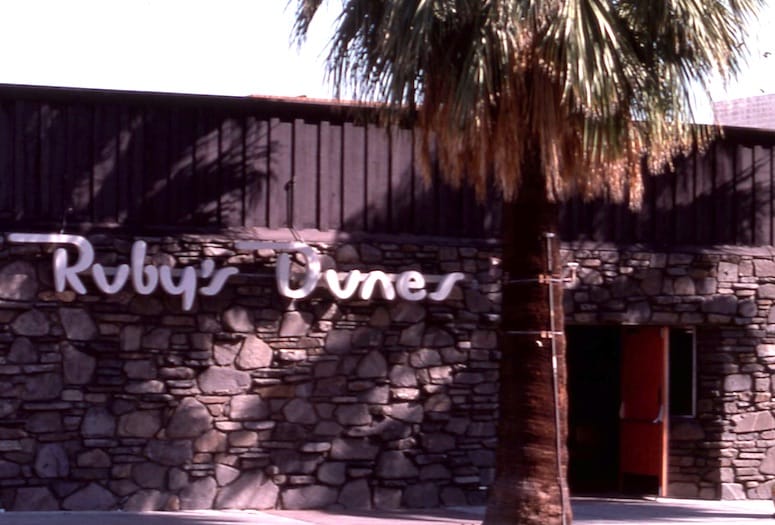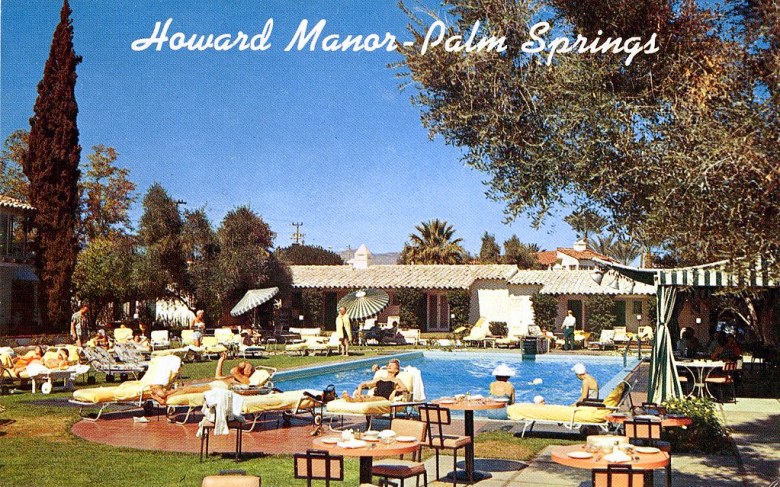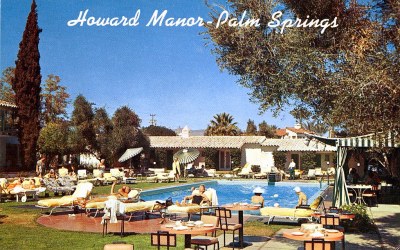Gambling is ubiquitous in the desert communities today, but that wasn’t always the case. In fact, gambling was considered taboo in Palm Springs back in the 1930s and 1940s.
In 1931, Nevada legalized gambling. While it was still illegal in most of the country, many communities looked the other way; after all, the Depression years were tough, and gambling was a welcome diversion. Gambling boats had started appearing offshore near Los Angeles, where water taxis shuttled out customers. Clubs also began opening in the city itself.
Al and Lou Wertheimer, members of the infamous Purple Gang that terrorized Detroit, moved West in 1931 and opened up the Clover Club, one of Los Angeles’ finest gambling houses. A third brother, Mert, was running a casino in Reno. They wanted to broaden their activities to Palm Springs—but Al and Lou ran into a roadblock: In Palm Springs, town leaders, led by the indomitable Nellie Coffman (owner of the popular Desert Inn), effectively squelched all attempts to open gambling clubs.
After being denied in Palm Springs, the brothers bought 20 acres in nearby Cathedral City to build their casino, and they opened the Dunes Club in 1934. The Spanish-style building was out in the middle of the desert off a newly bulldozed street called Date Palm Drive.
The Dunes was first-class, with elegant chandeliers, gilt-edged China, cut crystal and French cuisine. There was even a dress code for the patrons requiring formal evening gowns and suits. The finery seemed a bit at odds with the green felt tables and heavily armed guards. It was also alleged that the games could be rigged for the house.
It is said that Al Wertheimer had sufficiently bribed a local official who, in turn, notified the Dunes when a “raid” might take place. Many felt that the occasional “raids” were merely for show. The accommodation worked well, and for years, the Dunes Club was the “in” place to go. Errol Flynn, Clark Gable, Carole Lombard and Darryl Zanuck were all visitors.
The original Dunes Club burned to the ground in a suspicious fire in 1943. The success of the Dunes, however, prompted others to get into the game in the small community of Cathedral City.
Also in the 1930s, the 139 Club was opened by Earl Sausser and featured free chili, sawdust on the floor and numerous slot machines. It became the most popular club by appealing to a broader audience. (For example, the Dunes Club did not have slot machines, only table games.) Sausser died in 1942, and his lawyer, Walter Melrose, ran it until it closed in 1947. The building later became a thrift shop and was finally torn down in 1985.
An associate of the Wertheimers, Frank Portnoy, along with parking lot mogul Jake Katelman, opened The Cove, an upscale gambling club in Cathedral City. Constantly hassled by the authorities, they closed it down and moved to Las Vegas. The Cove Club, on East Palm Canyon Drive, later became an Elks Lodge.

Irwin “Ruby” Rubinstein, a close friend of Frank Sinatra, along with Wertheimer, bought a pool hall and café at 238 N. Palm Canyon Drive in Palm Springs, where they opened Ruby’s Dunes. Though it was a restaurant/nightclub, not a gambling venue, it was still a popular hangout, as Sinatra’s presence attracted his celebrity friends. After Wertheimer was convicted for tax evasion in 1942, Ruby took over the ownership. Rubinstein sold his interest in 1969, and the place underwent numerous ownerships and name changes.
The famed Howard Manor
Not content with the success of the Dunes Club, Al Wertheimer tried to operate an illegal gambling operation out of his home, an intimate hotel he built in 1937. Originally called the Colonial House, it later became Howard Manor.
The Colonial House, at first, was more or less a private hotel, housing the owner and his gambling buddies. It was reported that his home/hotel had a large illegal gambling room downstairs, entered through a secret stairwell concealed behind a locked pantry cupboard.
Wertheimer was later busted for tax evasion and given a 60-day sentence. While he made money from gambling, he did give back to the community. A Palm Springs Life article noted that he supported local charities, particularly youth groups. He bankrolled Palm Springs’ first baseball diamond, and contributed to other worthy causes, including repairs to Our Lady of Solitude Catholic Church. He earned the gratitude of many, even if they criticized his gambling ventures, before his death in 1953.

Howard Manor, at 572 N. Indian Canyon Drive, began its long run as a popular resort hotel in the late 1940s, when Robert S. and Andrea Leeds Howard bought the property. Robert was the son of Charles Howard, a successful car dealer and owner of the famous racehorse Seabiscuit. Andrea Leeds was an actress who had achieved fame in the 1937 movie Stage Door with Katharine Hepburn; Leeds even earned an Oscar nomination for Best Supporting Actress.
The Howard Manor’s supper club was called the Academy Room, and it became a legendary Palm Springs hotspot. For three decades, the Howard Manor gave larger resorts a run for their money.
In 1956, Annie and Dave Margolis leased the hotel from Robert Howard and continued operating it. In 1957, former boxing heavyweight champion Jack Dempsey, Margolis’ friend, bought a 10 percent interest. Dempsey spent a considerable amount of time in Palm Springs at the hotel, greeting guests and looking after his investment.
Countless celebrities visited the Howard Manor, including Frank Sinatra, Howard Hughes, Ronald Reagan, Kirk Douglas and Zsa Zsa Gabor. It was the type of social scene that became legendary in Palm Springs.
In the mid-1970s, when it was still a hot spot, I left Los Angeles for a carefree and relaxing Palm Springs weekend and stayed at Howard Manor when it was still a hot spot. Heck, I even bought a “Howard Manor” T-shirt.
The hotel was sold in 1979 to fitness pioneer Sheila Cluff and her husband, Don, who established one of the first spas in the desert. Sheila was a former figure skater and physical-education teacher and soon had her charges doing aerobics and other fitness routines.
The Cluffs changed the name to The Palms and made major renovations, creating a 45-room health resort. The Palms was not only one of the oldest spas in Palm Springs, but one of its most popular.
Extensive renovations were again performed in 2007, when it was renamed the Colony Palms Hotel. Today, it is a four-star boutique hotel spread out over three acres.
In 2023, tribe-owned casinos, including the three Aqua Caliente casinos, provide a plethora of gambling options in the Coachella Valley. People no longer have to run casino games out of the basements of their own homes.
Sources include Palm Springs Confidential, by Howard Johns (Barricade Books, 2004); Palm Springs Babylon, by Ray Mungo (St. Martin’s Press, 1993); Palm Springs Life, August 1988 issue; Los Angeles Times, May 26, 2021; and Colony Palms Hotel archives.
